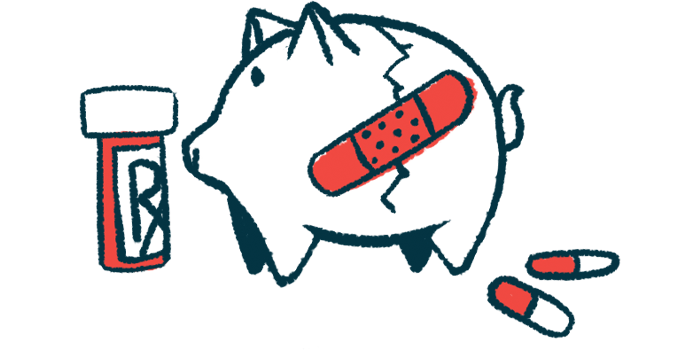Socioeconomic status drops fast after NMOSD onset: Danish study
Risk of reduced work capabilities, higher rates of receiving disability pensions

The risk of losing income increases dramatically within a few years after the onset of neuromyelitis optica spectrum disorder (NMOSD) in patients positive for antibodies against aquaporin-4 (AQP4), compared with the general population.
That’s according to a nationwide study in Denmark that also showed AQP4-related NMOSD was strongly associated with reduced work capabilities and higher rates of receiving disability pensions over a median follow-up of nearly nine years.
“It is important to emphasize the potential impact and the need for prompt and highly effective treatment from disease onset along with aggressive relapse treatment to provide the highest probability of complete recovery from relapse and… to protect [the] ability to remain fully employed,” researchers wrote.
The study, “Socioeconomic burden of AQP4-antibody seropositive NMOSD: a nationwide registry-based study,” was published in the Journal of Neurology, Neurosurgery, and Psychiatry.
NMOSD is a progressive autoimmune disorder most commonly associated with the production of self-reactive antibodies that target AQP4, a protein found on neuron-supporting cells called astrocytes.
Symptoms affecting vision, muscle control can limit everyday activities
The disease is characterized by inflammation of the spinal cord and optic nerve, or the nerve that relays signals between the eyes and the brain. This damaging inflammation leads to symptoms including issues with vision and muscle control, limiting everyday life activities.
NMOSD-associated disability can limit a patient’s ability to find or keep employment, negatively impacting their socioeconomic status.
“There are few studies on the economic burden of NMOSD treatment and management on the healthcare system, and data are scarce on the socioeconomic impact of [AQP4-related NMOSD] from the patient’s perspective,” the researchers wrote.
In the study, a team of researchers in Denmark set out to explore the burden of AQP4-related NMOSD on patients’ socioeconomic status and ability to work.
To do so, they conducted a nationwide study where they compared data between 65 NMOSD adult patients testing positive for anti-AQP4 antibodies and 650 people from the general population who were matched for age, sex, and education level.
Information about patients was gathered from 1992 to 2021, a period when NMOSD was mostly managed with off-label immunosuppressive therapies. Soliris (eculizumab) became the first approved NMOSD therapy in Europe and other regions in 2019. During the study period, two patients received Soliris in the later stages of the disease.
At the start of the study, the annual median income of AQP4-related NMSOD patients was not significantly different from the controls. Patients were followed for an average of 8.6 years.
41% reduction in income 1 year after disease onset
Median income data was available for 35 patients and 402 matched controls. One year after disease onset, NMOSD patients had experienced a 41% reduction in income, from a median €22,631 to €13,285, which is the loss of about $10,350 U.S. dollars. In contrast, controls had a median loss of €1,592 (about $1,763) in the same one-year period.
Also, 69.3% of NMOSD patients had lost their income from salaries two years after disease onset, while losses were seen only in 24.1% of the matched controls.
Five years after disease onset, socioeconomic differences between patients and matched controls were even greater. NMOSD patients had a median income of €276 (about $305), compared with €22,141 (about $24,524) for matched controls.
NMOSD patients were significantly more likely to have disability pension (37% vs. 14%) or “flexjobs” (17% vs. 4%) than controls at the end of follow-up, even though these proportions were similar between groups at the study’s start.
“Flexjobs” are special social welfare jobs in Denmark offering reduced, flexible working hours for individuals with permanently reduced working capabilities.
The researchers also compared the clinical characteristics of NMOSD patients with and without disability pensions during follow-up. They found 17.4% of those on disability pension, but none of those without that pension, experienced a disease relapse affecting several regions as the first sign of the disease.
There were also no significant group differences at follow-up in terms of civil status, including rates of marriage and divorce.
The researchers noted their study had a small sample size due to the rarity of NMOSD, limiting some of the statistical analyses they could perform on the data.
Still, the results “show a dramatic change in socioeconomic status of patients with NMOSD occurring within a few years after disease onset,” the researchers concluded.








